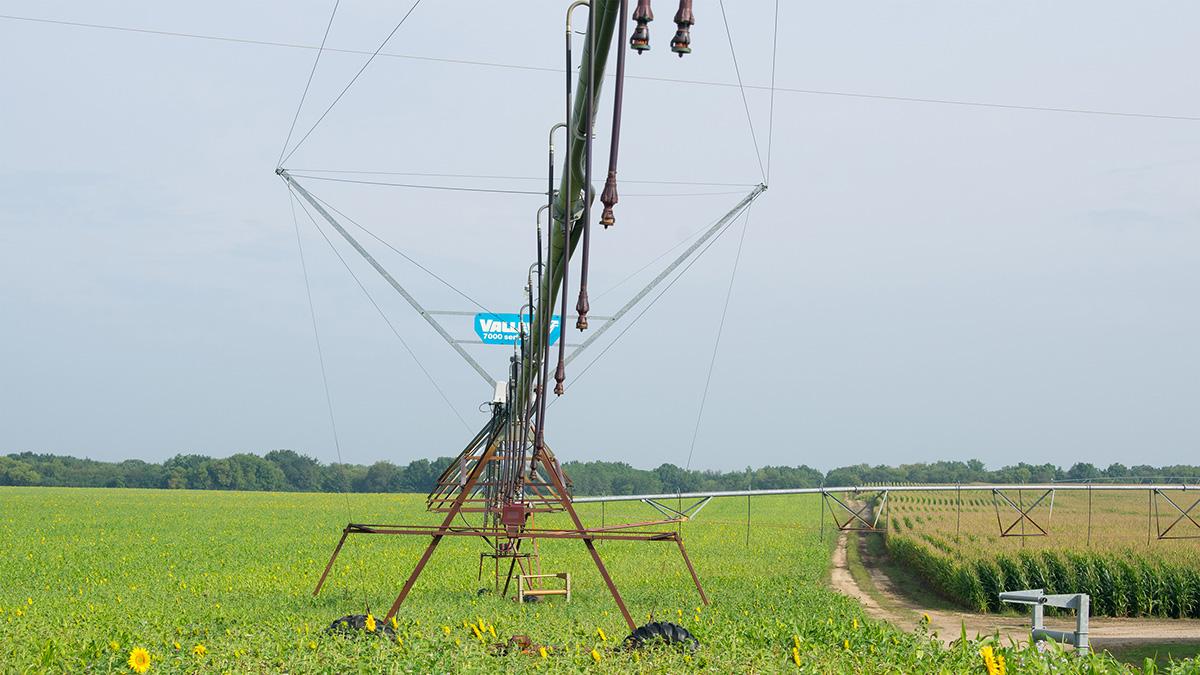Kallie Jo Coates/realagstock
Center pivots comprise three main components: the pump, power unit, and pivot. Traditionally on leased cropland, the landowner owns the pump and pivot. Depending on the area of Nebraska and available energy sources, the power unit may be owned by the landowner or tenant. Ownership of the pump and pivot by the landowner creates greater flexibility for the management of the land when terminating the tenant or selling the property.
There are instances where the ownership of the pump and pivot are divided between the landowner and the tenant. These scenarios can create complications. Before a lease with divided ownership is entered, a written lease agreement should be signed. This lease agreement should clearly state the ownership of each component, responsibilities of each party, and provisions regarding lease termination. This article will discuss some of the considerations and challenges of this scenario.
Divided ownership of a center pivot irrigation system may come about from one of three situations:
- The transition of dryland to irrigated cropland. The addition of a center pivot system may provide higher rental income for the landowner. For the tenant, it could imply higher yields.
- The transition from gravity irrigated ground (siphon tubes, gated pipe, plastic gut). Arguments for transitioning to a center pivot is the potential for higher rental income and reduced annual ownership costs for the landowner. For the tenant, the transition could mean higher water use efficiency and decreased labor.
- The replacement of an “outdated” or aged center pivot system. Typically, the update of an existing pivot has only a small effect on rental rates.
Based on interaction of Extension professionals with Nebraska landowners and tenants, a common way to divide ownership is for the landowner to pay for and own all the permanent underground fixtures of a center pivot system. This includes the pump, underground utilities, pipe, and dirt work required for installation. If the lease with the tenant is terminated, the tenant will not remove any of the permanent underground infrastructure. Keep in mind that real estate property taxes may rise, due to an increased value of the land if it is transitioned from dryland or gravity irrigation to center pivot irrigation.
In this scenario, the tenant typically pays for and owns removable, above ground equipment: power unit, pivot, etc. Personal property taxes will be increased for the tenant, with the ownership of a new or additional pivot. Another consideration is insurance of the pivot. If the pivot is owned by the tenant, it should be insured by the tenant.
The repairs of the equipment are divided according to the ownership. If the scenario above holds true, the landowner is responsible for the underground repairs. The tenant would be responsible for all above ground repairs and maintenance (pivot panels, engines, drip oil, gear boxes, tires, nozzles etc.). This shifts the bulk of the annual maintenance expense from the landowner to the tenant.
When the tenant owns the pivot, the rental rate charged should be discounted, to compensate the tenant for higher ownership and repair expenses. The “Nebraska Farm Real Estate Market Developments 2017-18” Report evaluated common rent discounts for this scenario. The results are shown in Table 1 below.
| Discount per Acre | Percentage of Respondents |
|---|---|
| $0 | 2.4% |
| $10 to $25 | 30.6% |
| $26 to $50 | 58.5% |
| $51+ | 8.5% |
This report shows the discount given to the tenant as credit for their ownership of the pivot in the lease agreement. Table 1 shows the estimated discount range and percentage of respondents associated with each estimated amount. The University of Nebraska–Lincoln has not conducted additional surveys on this topic since the 2018 report. Another way to determine the amount of the discount is to estimate the annual ownership cost of the center pivot including depreciation, interest, repairs, taxes, and insurance. The bottom line is that landlords and tenants with divided ownership of an irrigation system are often left to negotiate the discount. The 2018 report suggests that, when the ownership of an irrigation system is divided, the discount places the rental rate per acre somewhere between the area’s gravity irrigated rate and center pivot rate. The most recent rental rates for Nebraska farmland can be found at https://cap.unl.edu/realestate
The lease agreement must include provisions regarding termination of the tenant. Often, the terms of the agreement allow the landowner to purchase the pivot and/or power unit from the tenant. We cannot emphasize enough that these provisions should be reviewed by an attorney. Make sure the lease clearly states (1) if the landowner has the option to or is required to purchase the equipment upon the termination of the tenant, (2) how the purchase price of the equipment will be determined, and (3) if the tenant must remove the equipment, how soon must that be done from the date of the termination notice.


